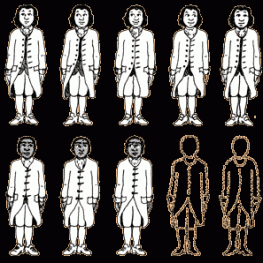The Three-Fifths Compromise
The Reform: The Three-Fifths Compromise and its effects

Five slaves were only counted as three unlike white men
The Three-Fifths Compromise was hard for the delegates to agree upon since the beginning. The debate over how much slaves should count as persons was long and intense, and both sides of the argument were not willing to give in.
- The Northerners and the Southerners knew that this debate wasn't on whether slaves should be treated more humane, but that it was a political power struggle between them.
- With this compromise, the power will be swayed to one side and they all wanted it to be to their advantage.
- The two opinions of the ratio of slaves counted toward populations were:
- The North presented 4 to 1
- The South argued for 2 to 1
- After a long intense debate, they settled on the ratio of 5 to 3, suggested by James Madison
- Raising the Southern seats in the Congress by seven percent
- Giving the Southern political parties the dominance over Northern parties
- The additional power that this clause gave to the South was shown in presidency from 1787 to 1861. For almost 75 years, the Southern parties were able to get their candidate as president almost every election.
- The Northern states grew faster than Southern states, steadliy gaining power. Therefore, the Southern seats in Congress dropped three percent.
- Also, with the civil war and the victory of the North, slavery was nullified by the 13th Amendment.
- This rendered the three-fifths clause useless, because there wasn't any slaves allowed.
